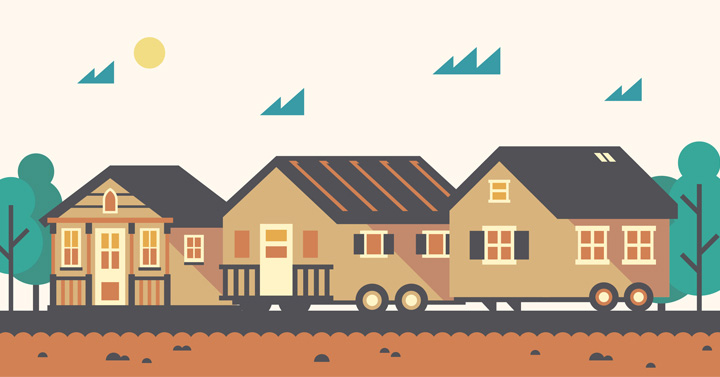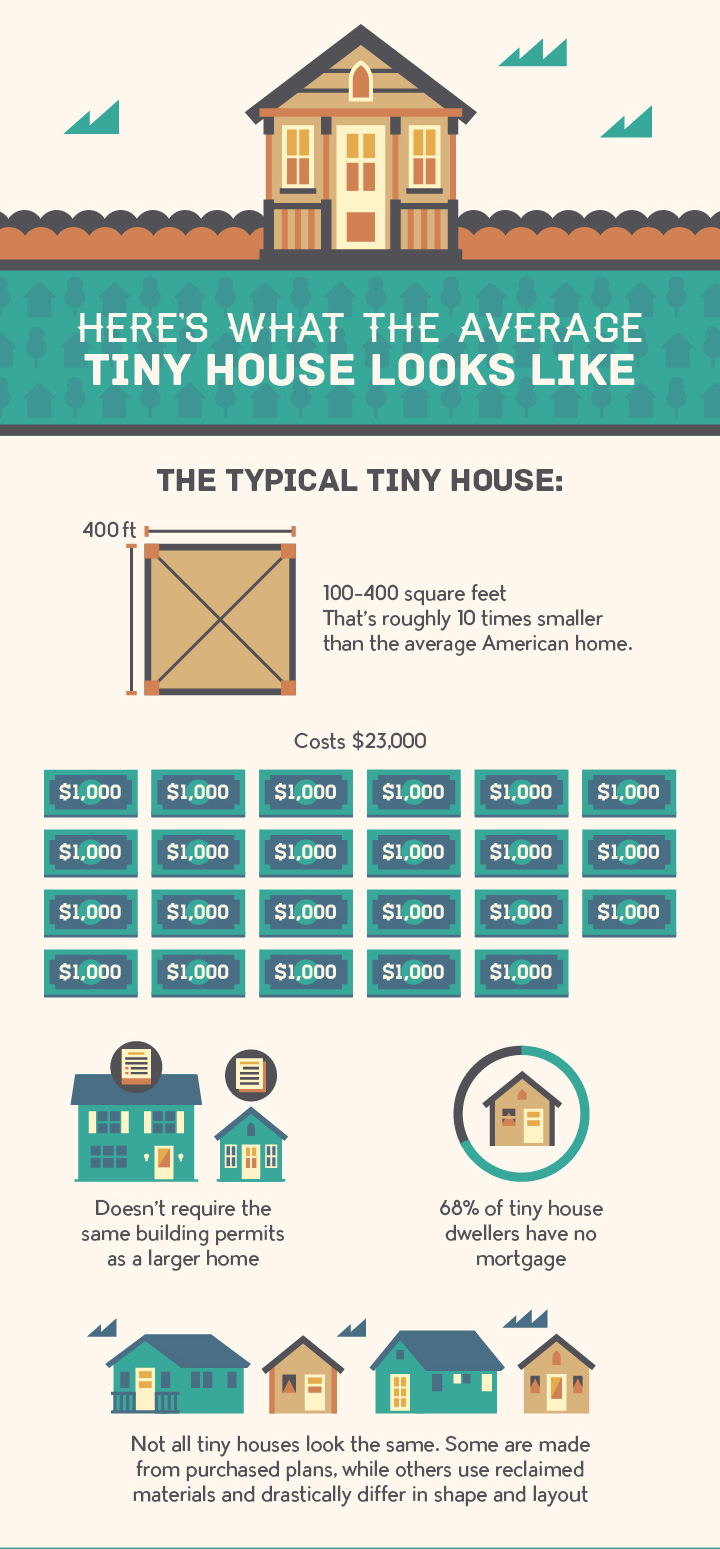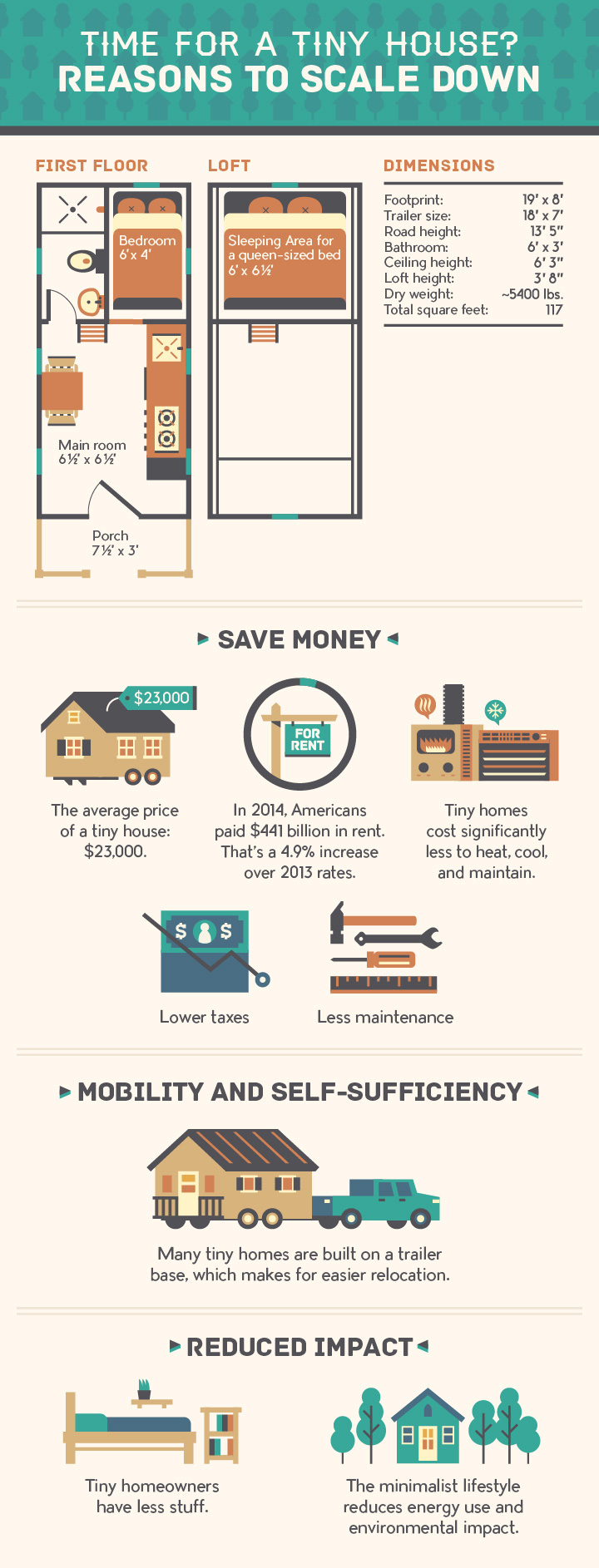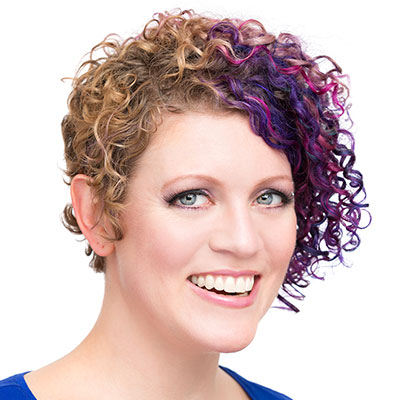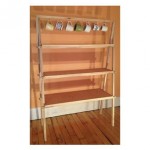Between 1975 and 2005, the average American family got smaller—but their house got bigger. Then came the housing crash that almost wiped out the American economy, and in its aftermath, many people began to wonder how much space we really need to live well. The result: a much-publicized return to simpler living in 1,000 square feet or less.
The “tiny house” movement makes up about 1 percent of home sales, and it’s believed to be growing. With a total cost of around $20,000 to $50,000, tiny house living is an attainable prospect for many. But is it right for you?
Why Live Tiny?
Proponents of tiny house living have many reasons for choosing this lifestyle—because make no mistake, it is a lifestyle. Moving into a tiny house means drastically reducing your possessions and changing many of your habits. For many of us, that may feel like a big sacrifice. So what are the benefits that make tiny house living worth it?
First and foremost, tiny house living can help you save money. In 2014, Americans paid $441 billion in rent. That’s a 4.9 percent increase over 2013. In many cities, rents are skyrocketing. In 2015, Zillow predicts millennials will turn to home ownership in unprecedented numbers. Quite simply, renting is too expensive. If you could build a home for a few thousand dollars and never pay rent again, wouldn’t you consider it?
Tiny houses’ low profile has another benefit: flexibility. Imagine building your home on a trailer base so you could relocate a little more freely. Granted, moving a tiny house isn’t something to be taken lightly (imagine sending your biggest possession rolling down the highway), but it’s certainly easier than the conventional moving experience.
In addition, having a low-cost home means you can spend more on travel. Building a tiny house has the potential to save you money on construction, utilities, and mortgage payments—even cleaning supplies and repairs. Those savings can help you avoid being “tied down” by home ownership. A tiny house makes a fantastic home base for location-independent professionals, nomads, and snowbirds. Just park your home in a safe (law-abiding) spot, and it will be waiting when you return from seeing the world.
For many people, however, a tiny house’s biggest benefit is its minimal impact. In a society focused on consumption, many people question the necessity of collecting a wealth of possessions, not to mention the space to store them. Minimalist and sustainable lifestyles reject that pattern outright. Are you learning to live well with less? Working to reduce your energy use and environmental impact? Then a tiny house may be a suitable option for you.
Who’s Doing It?
The “tiny life” seems wonderful in theory, but realistically, it won’t work for everyone. So who has successfully made the transition?
The biggest group seems to be young professionals, mostly millennials. Some, like Andrew Odom, previously owned a conventional home, but found the cost of the American Dream too steep. Others, like Ryan Mitchell, were chewed up and spit out during the economic downturn, and want to create a stable life that can withstand any future crisis. “You’re not just building a house, you’re building a life for yourself,” Mitchell told Salon.com. For this group, a tiny house is a real investment—more solid than a rental, without the risk of real estate—that presents a viable option for the over-educated and under-employed mmillennial generation.
Next up are the artists and builders—one of whom, Jay Shafer, kicked off the tiny-house movement with his Tumbleweed tiny houses. Artists in particular are often subject to fluctuating incomes and partial to nomadic living. What could be better suited to the creative lifestyle than a custom-built, bought-and-paid-for, tiny house on wheels? Builders, DIYers, and creative types are also the most likely to take on the actual task of building a home from scratch (as opposed to working with a professional) a process that, while time-consuming, helps control the budget.
As idyllic as the tiny-house life may be, it isn’t usually permanent. Many of the people who go tiny see it as a temporary solution for their current status. Those young professionals, for example, may one day have children and need to add a bedroom. On the other end of the spectrum, many retirees and empty nesters move into tiny homes as a way to cut costs and increase their options for location and lifestyle. And why not? When you can buy a new tiny house for as little as $10,000, selling your existing home frees up quite a bit of funds for later years.
Some people, however, don’t see tiny house living as a temporary state. These are the minimalists, people who have pared down their needs and possessions to live a more simple life. Driven by the idea that simplicity leads to happiness (not to mention sustainability), minimalists are often able to live comfortably on smaller incomes and in much smaller spaces.
How To Know If Tiny Is Right for You
Think you may fit into one of the above categories? Before you buy a trailer and start putting down subfloor, ask yourself a few important questions.
First (and undoubtedly the most important) question: Can you really live this way? Moving into a tiny house either means putting most of your worldly possessions into a storage space, or jettisoning them entirely. If you’re married or in a relationship, it means sharing the equivalent of a small studio apartment for the foreseeable future. And unless you’ve got a pretty big savings account, it means investing a significant amount of money into a new lifestyle.
You’ve also got to ask yourself whether you can give up on the conventional way of living—big house, big car, big bank account. How will you talk to friends and family about your decision to live small? What will it mean when you don’t have a guest room (or a living room)? What happens when it’s very hot or very cold, and you’re limited to 150 square feet? In these moments, you’re no longer making a point; you’re making a life. Be sure it’s the life you truly want.
Many tiny houses are technically illegal: They are so small that they don’t fit conventional building codes and are therefore uninhabitable by law. That could give law enforcement the power to condemn your house or at least levy fines against you. And once your tiny house is built, where will you park? It’s entirely possible that you’ll need to buy a plot of land. That’s another big expense, and it can also create trouble if you prefer to be closer to a city center—especially for minimalists and environmentalists who prefer to bike and walk when possible. All that said, there are measures you can take to live in a legal tiny home. Read up on creative ways to get your tiny house ideas approved.
If you have answers to all of these questions, then it’s very likely you’re destined for tiny house living. If not, find the answers before you sink the first nail.
Planning Your Tiny Life
Planning is the fun part. Your tiny house can be custom-built to fit your life, so let your brain run wild with creative ideas and logical solutions to everyday problems.
From the outset, start with a clear idea of the various activities you do throughout the day, and how your floor plan will best suit your needs. Research what others have done, then sketch your ideal floor plan—not just on paper, but in masking tape on the ground. Mitchell recommends acting out a typical day in your life, including things like dealing with dirty laundry and trash. “It is at this point that you will discover things that don’t work and need to be changed,” Mitchell says. Make your changes, and start over again.
Once you’ve got it all figured out, either buy or create a solid building plan for your new home. Use this to determine your budget. Factor in costs for materials, tools and supplies, as well as land. Most banks won’t finance a tiny home project, but tiny house lenders do exist.
Finally, figure out where your tiny house will reside, at least in the short term. Moving frequently can be a difficult process, so consider how you can make something work for at least a couple of years. If you want to move more often than that, you may actually be better off in an RV.
Once all those decisions and details are taken care of, just one thing remains: building a house.
Join the Tiny Revolution
Are you fired up about tiny house living? Want to learn more about what it really takes? There are several fantastic blogs run by true tiny housers, that discuss the good, the bad, and everything in between. You can also hook up with the tiny house community at the annual Tiny House Conference.
Whether or not you get involved in the community, joining the tiny house movement automatically situates you in a small revolution. Minimal, simple living is its own reward, and it’s a highly personal decision, but it also has economic and cultural effects. So no matter how you do it, you’re doing the world some good. Congratulations, and happy tiny living!
If this article has you thinking about a move to a tiny house, check out these small farmhouse tables. — http://www.custommade.com/gallery/all-custom-dining-tables/
